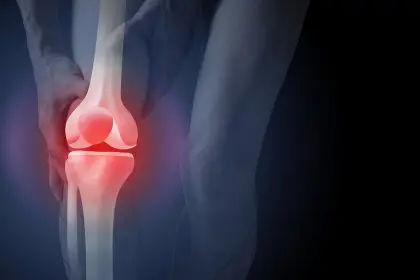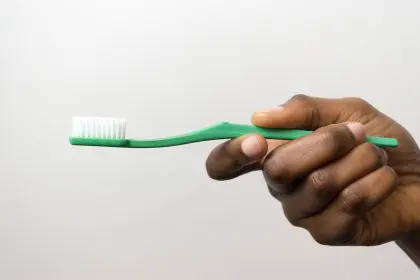Medical professionals are increasingly concerned about the impact of tight clothing on reproductive health. Here’s what experts want you to know about the hidden risks of your favorite pair of jeans.
The surprising link between tight jeans and male fertility
Dr. James Chen, director of male reproductive health at UCLA Medical Center, has noticed a concerning trend. “We’re seeing more young men with fertility issues potentially linked to their clothing choices,” he explains to PEOPLE. The science behind this connection reveals three main areas of concern.
First, tight jeans can raise scrotal temperature above its optimal range for sperm production. The male reproductive system naturally keeps sperm-producing organs outside the body to maintain cooler temperatures. Constrictive clothing disrupts this delicate balance.
Second, these form-fitting garments restrict blood flow to reproductive organs. Think of it like wearing a too-tight rubber band around your finger – eventually, circulation suffers. For reproductive organs, this reduced blood flow can affect both sperm production and overall organ health.
Third, constant compression from tight jeans may lead to varicocele, a condition where veins in the scrotum become enlarged. This condition affects up to 15% of adult men and ranks among the leading causes of male infertility.
Female fertility: The hidden dangers
Women face their own set of risks when it comes to tight clothing. Dr. Maria Santos, a reproductive endocrinologist at Mount Sinai Hospital, explains that the effects can be both direct and indirect.
Tight jeans create an environment that increases the risk of vaginal infections by trapping heat and moisture. These infections, while treatable, can lead to more serious complications if they become chronic. Some women may experience inflammation or scarring that affects their reproductive tract.
The pressure from tight clothing can also aggravate existing reproductive conditions. Emily Parker, a 32-year-old teacher from Chicago, discovered that her tight jeans were worsening her endometriosis symptoms. “Switching to looser styles made a noticeable difference in my daily pain levels,” she shares with PEOPLE.
The fashion industry responds
Major fashion brands are taking note of these health concerns. Designer Rachel Martinez has launched a new line of “fertility-friendly” jeans that prioritize both style and reproductive health. “We can create fashionable clothing that doesn’t compromise well-being,” she tells PEOPLE.
Finding the right balance
Dr. Chen recommends the “two-finger test” – if you can’t easily slip two fingers into the waistband of your jeans, they’re too tight. For those who love their skinny jeans, he suggests limiting wear to special occasions and choosing looser fits for daily use.
Beyond jeans: Other clothing concerns
Tight underwear, compression shorts, and even some workout gear can pose similar risks. Dr. Santos advises rotating between different styles of clothing and paying attention to how your body feels in different garments.
The broader picture: Lifestyle factors affecting fertility
While clothing choices matter, they represent just one piece of the fertility puzzle. Dr. Robert Kim, a reproductive health specialist at Johns Hopkins, emphasizes the importance of looking at the bigger picture.
Diet plays a crucial role in reproductive health. Foods rich in antioxidants, healthy fats, and essential nutrients support optimal fertility. Regular exercise improves blood circulation and hormone balance, but wearing loose, breathable clothing during workouts becomes especially important.
Stress management also affects fertility outcomes. Chronic stress can disrupt hormone production and menstrual cycles in women and impact sperm production in men. Finding effective ways to manage stress through mindfulness, exercise, or therapy can support reproductive health.
Signs your clothes might be affecting your fertility
Watch for these warning signs that your clothing choices could be impacting your reproductive health: Physical discomfort or pain in the pelvic area Recurring infections or irritation Visible marks or indentations from tight clothing Temperature sensitivity in the groin area Numbness or tingling in the legs or pelvic region
Making informed choices
The solution isn’t necessarily throwing out all your tight clothing. Instead, medical experts recommend:
Rotating between different styles of clothing Choosing breathable fabrics Paying attention to fit rather than size numbers Taking breaks from tight clothing Listening to your body’s signals
The future of fashion and fertility
As awareness grows about the connection between clothing and reproductive health, researchers continue studying these effects. Some textile companies are developing new fabrics that provide the look of tight clothing without the same level of compression.
When to seek medical advice
Dr. Santos recommends consulting a healthcare provider if you experience persistent discomfort from tight clothing or have concerns about your reproductive health. Early intervention often leads to better outcomes.
Real stories of change
Tom Martinez, a 34-year-old software engineer, saw improvements in his sperm count three months after switching to looser clothing. “My doctor suggested this simple change, and it made a real difference in our fertility journey,” he reveals to PEOPLE.
Similarly, Sarah Chen found that changing her wardrobe helped resolve recurring infections that had plagued her for years. “I still wear my favorite skinny jeans occasionally, but I’m much more mindful now about giving my body breaks,” she explains.
Expert recommendations for protecting fertility
Fertility specialists suggest you choose jeans with at least 2% stretch content Opt for high-waisted styles that don’t compress the lower abdomen. Take breaks from tight clothing every few hours Consider looser fits for everyday wear Pay attention to fabric composition and breathability
Looking ahead
As we continue learning about the connections between clothing choices and reproductive health, medical professionals emphasize the importance of making informed decisions. “It’s not about giving up style completely,” Dr. Kim notes. “It’s about finding a balance that works for both your fashion preferences and your reproductive health.”
The key lies in awareness and moderation. Understanding these risks allows people to make clothing choices that support their reproductive health while maintaining their personal style. As fashion continues evolving, the industry’s growing attention to health impacts suggests a future where style and wellness can truly coexist.

















